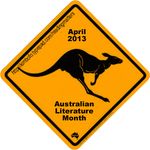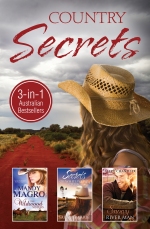 After finishing Dying in the First Person by Nike Sulway, I felt as I did after reading Charlotte Wood’s The Natural Way of Things. I immediately wanted to talk to someone who had read the book. I wanted to share its insights about love and language, about the near-impossibility of finding the words to express the truth about human existence, our hopes and fears, dreams and desires.
After finishing Dying in the First Person by Nike Sulway, I felt as I did after reading Charlotte Wood’s The Natural Way of Things. I immediately wanted to talk to someone who had read the book. I wanted to share its insights about love and language, about the near-impossibility of finding the words to express the truth about human existence, our hopes and fears, dreams and desires.
Dying in the First Person is about adult twin brothers who, as children, created a world with a language of its own: Nahum. In this world, single men live on individual islands. At an appointed time, a son appears, brought by the sea or by a bird, and once the boy is grown, the man sails away, because the island cannot carry the burden of more than one man’s heart. With this imaginative world as a backdrop, Sulway weaves a tale of love and loss, of escaping and yearning, of remembering and deliberate forgetting. As a teenager, one of the twins, Morgan, grows wild. He leaves the confines of the boys’ suburban life with their bookseller mother, their father having died in circumstances that the story is slow to reveal. The other twin, Samuel, stays with the mother, and is only reconciled with his estranged brother years later through writing: he translates stories that he receives from Morgan, now based in the Netherlands. These stories, written in Nahum, earn Morgan an international following before his sudden death.
Into Samuel’s world steps Ana, his brother’s one-time lover, whom he lets stay in the cabin he built for his brother on his property in the subtropical Queensland bush. Samuel is challenged by this interloper and also by the mysterious markings in Morgan’s final work, eighteen new letters or words that appear to have no referent in the world he and his brother created. At the same time, he discovers his book-loving and unconventional mother is ill and, as her illness progresses, her ability to distinguish between him and his brother in her memories deteriorates.
Dying in the First Person is fable-like in its resonance, both emotionally and aesthetically. There is much to ponder on; particularly provocative are hints about the erasure of women’s identity and writing, as well as the complexities of writing from an “other” gendered position. While much of the story’s focus is on language, its subjects are life, love and the secrets and inadequacies that keep us, as individuals, apart from our loved ones. The story is about human faults, failings and frailties; it’s also about hope. Reading it, I was reminded of a prayer that helped me through a challenging time in my relationship: “Help me see this person as they really are, not who I want them to be, and not who I fear they might be.” In this novel, through language, through love and loss and hope, Sulway points a way.
~
Author: Nike Sulway
Title: Dying in the First Person
Publisher: Transit Lounge
ISBN: 978-0-9943958-3-2
Date of Publication: 01/05/16
This review forms part of my Australian Women Writers Challenge. My thanks to the publishers for a review copy.






